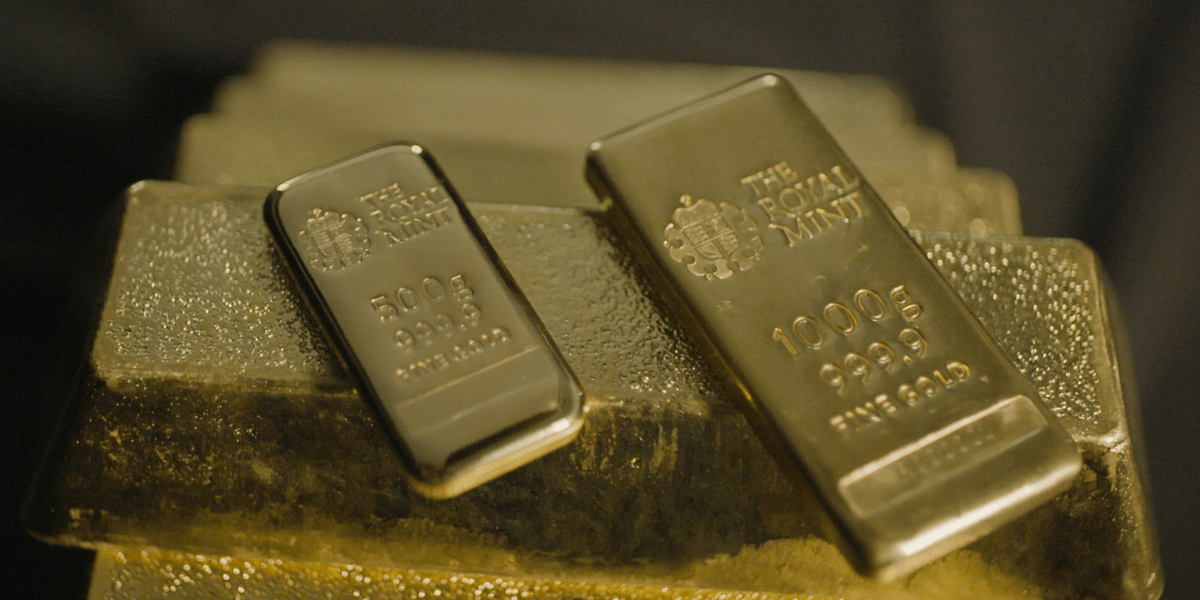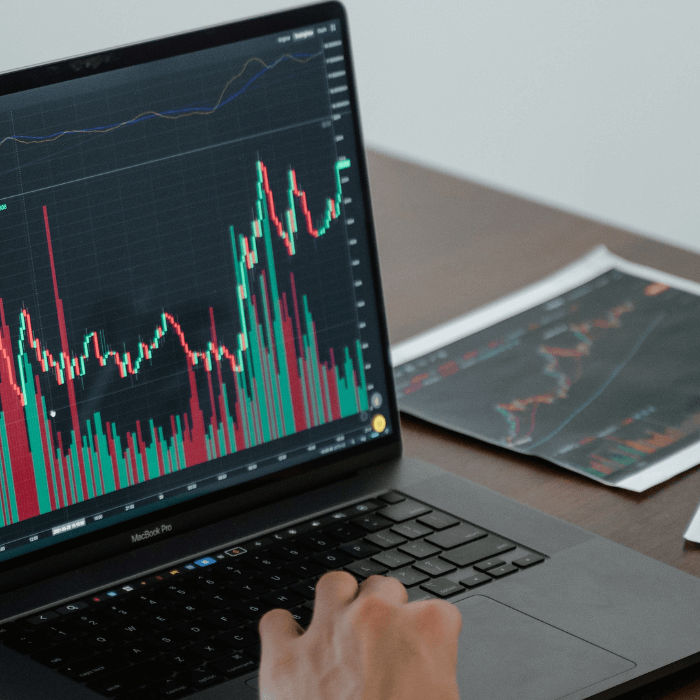Unlocking the Potential: The Royal Mint gold-backed fund is eligible for a stock and shares (investment) ISA
The Royal Mint
Category: Invest

Ticker: RMAU (USD); RMAP (GBP)
The deadline for contributions to 2023-24 Individual Savings Accounts (ISA) in the UK is fast approaching. With the Capital Gains Tax (CGT) dropping to £3,000 per year [1], there's a strong incentive for many investors to maximise their capital within the tax wrapper.
For those looking to add to their ISA, the next question is where to invest. U.S. equities have seen strong performance, largely on the back of expected interest rate cuts in the U.S.
However, since then, the outlook for such interest rate cuts is looking less certain. A host of potential risks sit on the horizon, from geopolitics to global economic slowdown. With the prevailing uncertainty, investors may wish to look towards gold.
Gold has always stood out for many as a timeless asset. Below, we outline three key considerations for investing in gold. Within the context of an ISA (or a SIPP), the benefits of including gold securities in your portfolio could be even more appealing.
Safe Haven
During times of economic uncertainty or geopolitical instability, investors often turn to safe-haven assets such as gold. The precious metal has demonstrated its resilience in preserving long-term wealth during turbulent periods. Including gold exposure in an ISA could provide a safeguard against unforeseen – or black swan – events which normally impact traditional financial assets.
Looking back at the two most significant crises in recent memory, the 2008 global financial crisis and the outbreak of the Covid-19 pandemic in the Western world (beginning in 2020), gold performed its role admirably.
Gold climbed by some 30% through the pandemic era of intermittent lockdowns and supply chain jams, whilst equity markets fell by a similar magnitude.[2]
Similarly, when the global financial crisis (the ‘credit crunch’) struck, gold trended firmly higher in the years following. Equity markets, however, fell by up to 40% in the immediate aftermath of the Lehman’s collapse, taking around five years to recover.[3]
Diversification
One of the key principles of successful investing is diversification, and gold may provide an effective means to achieve this. Including gold securities within an ISA could add a layer of diversification that may help counterbalance the risks associated with traditional investments such as stocks and bonds. As the value of gold tends to move independently of other assets, it could potentially smooth out the effects of market fluctuations on a well-diversified portfolio.
One way to measure this is by looking at the correlation between gold and other investments. A correlation of 1 would imply that both investments see their prices move in perfect synchrony, while a correlation of 0 would imply they never move in tandem. Looking at data over the past 20 years, gold’s correlation with the FTSE 100 sits at 0.16, while the correlation with the S&P 500 sits at 0.07.[4]
Inflation Hedge
Longer term, the case for gold as an inflation hedge should still be considered. The world's major economies have made significant progress in bringing down the inflation spikes experienced in 2021 and 2022. But are we now set to return to the low inflation environment of the past 30 years? There are reasons to believe not.
After all, a key driver of lower inflation was globalisation, with the entry of China and former Communist countries into the global economy in the 1990s. We are now potentially faced with a period of deglobalisation, with terms such as "reshoring" or "friendshoring" growing in popularity. Related to this, we have seen a return to industrial policy, such as with the United States' Inflation Reduction Act. Such policies have the potential to be inflationary. So, if such an outlook is correct, gold, and other commodities offer the potential to act as a store of value while inflation erodes the value of paper currency.
Gold has historically served as a hedge against inflation. According to research from PGIM, while higher inflation periods proved challenging for equities and bonds, they have been more positive for precious metals such as gold. PGIM's research paper 'Portfolio Implications of a Higher US Inflation Regime' compared returns of different asset classes in periods between 1973 and 2021 when inflation was above 4%. During such "high inflation regimes", real returns for stocks and bonds were negative while real returns for precious metals were positive.[5]
During the 1973-2021 timeframe, across the periods of high inflation, the average inflation rate was 7.4%. Over those periods, precious metals returned, in nominal terms, 7.9%, and in real terms, 0.5%. If we are due a period of structurally higher inflation, gold is a potentially attractive asset class.[6]
When inflation rises, the purchasing power of currencies tend to decrease. Gold, on the other hand, has maintained its value over time. By allocating a portion of your investment portfolio to gold securities within an ISA or SIPP, you could position yourself to offset the eroding effects of inflation.
RMAU
The Royal Mint Physical Gold ETC (RMAU) has discernible sustainability features, including, most significantly, an allocation to 100% certified recycled gold bars, which now exceed over half the fund’s assets.
Investors can trade the ETC across the major European exchanges, including the London Stock Exchange, Deutsche Boerse, Borsa Italiana, and Euronext Paris. RMAU is designed to offer investors a convenient and cost-effective way to gain exposure to physical gold.[7]
RMAU is entirely backed by London Bullion Market Association (LBMA) Good Delivery bars, where the 400 ounce bars are custodied at The Royal Mint’s purpose-built vault – one of Europe’s most secure sites.
The Royal Mint is dedicated to sustainability and responsible sourcing practices across all its precious metals supply chain. The allocation to recycled gold bars now exceeds 50% of assets, with all bars held in the fund a minimum standard of post-2019 Good Delivery status, a watershed year for ESG (Environmental, Social and Governance) considerations within the LBMA’s Responsible Gold Guidance.[8]
Keeping gold within a circular economy has well-documented environmental benefits; recycled bar production expends a fraction of the carbon involved in the processing of newly mined bars. The Royal Mint aspires to be the standard-bearer for sustainable precious metals.[9]
RMAP, the GBP equivalent of RMAU, is also available via established investment platforms, stockbrokers, and wealth managers.
Conclusion
Incorporating gold securities within an ISA could offer investors a unique set of benefits, ranging from diversification and inflation hedging to acting as a safe-haven asset. The historical resilience of gold, coupled with its low correlation with other assets, may make it an appealing choice for those looking to build a well-rounded and resilient investment portfolio. Whilst every investment comes with its own set of risks, a long-term allocation to gold, sheltered in an ISA, could contribute to a more balanced and robust financial strategy.
Sources
[1] - UK finance minister Jeremy Hunt outlines budget | Financial Post
[2] – How Precious Metals Have Performed During Coronavirus: A Year In Review (forbes.com)
[3] – What could a US recession mean for gold and gold equities? (schroders.com)
[4] - Bloomberg, 28/2/24. Time period measured 28/02/04 – 28/02/24
[5] - https://www.pgimquantitativesolutions.com/research/portfolio-implications-higher-us-inflation-regime
[7] - https://www.hanetf.com/product/7/fund/the-royal-mint-responsibly-sourced-physical-gold-etc
[8] - https://www.lbma.org.uk/publications/responsible-gold-guidance-v9
[9] - Gold and climate change: An introduction | World Gold Council
Notes
The contents of this article are accurate at the time of publishing, are for general information purposes only, and do not constitute investment, legal, tax, or any other advice. Before making any investment or financial decision, you may wish to seek advice from your financial, legal, tax and/or accounting advisers.
This article may include references to third-party sources. We do not endorse or guarantee the accuracy of information from external sources, and readers should verify all information independently and use external sources at their own discretion. We are not responsible for any content or consequences arising from such third-party sources.









